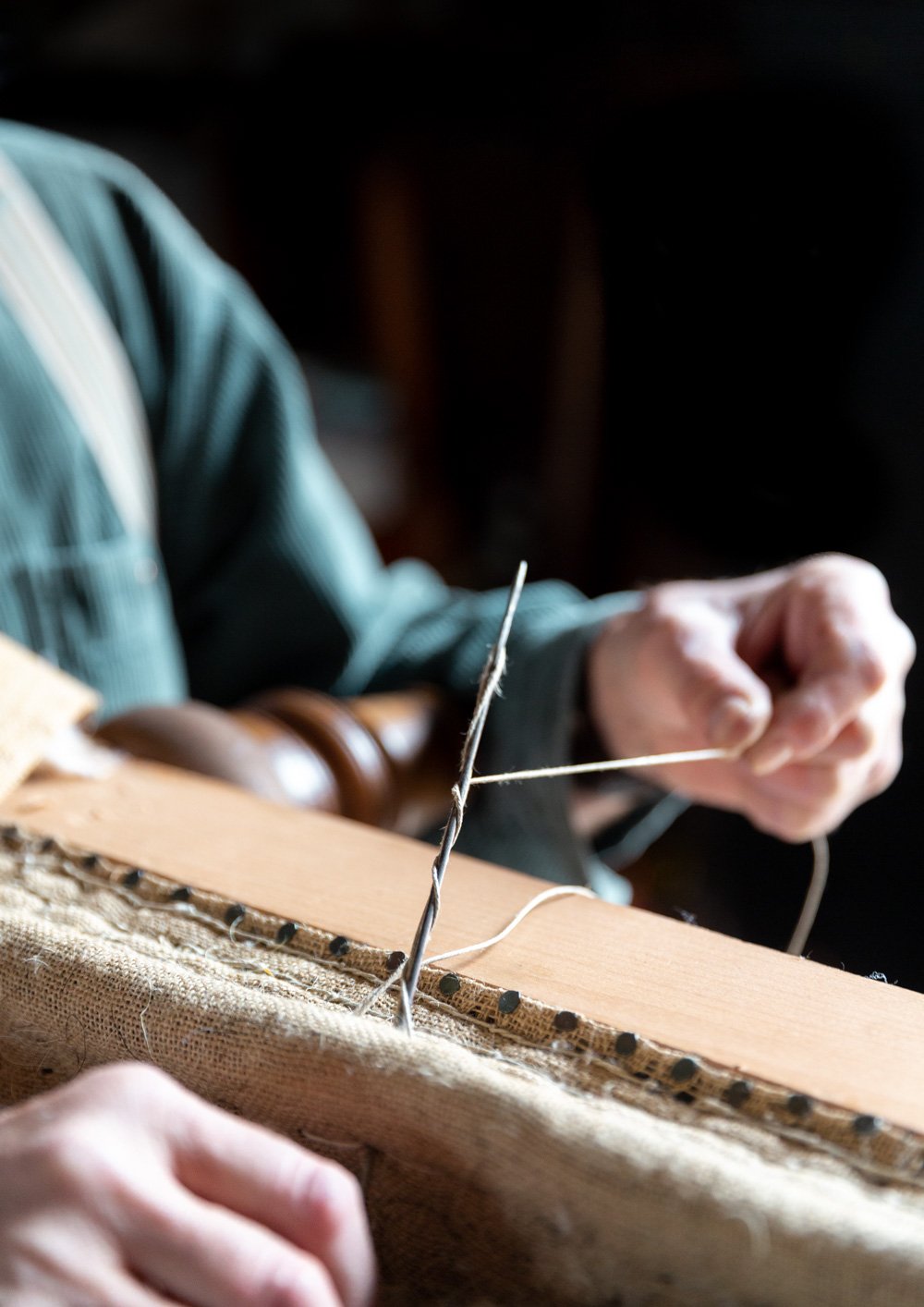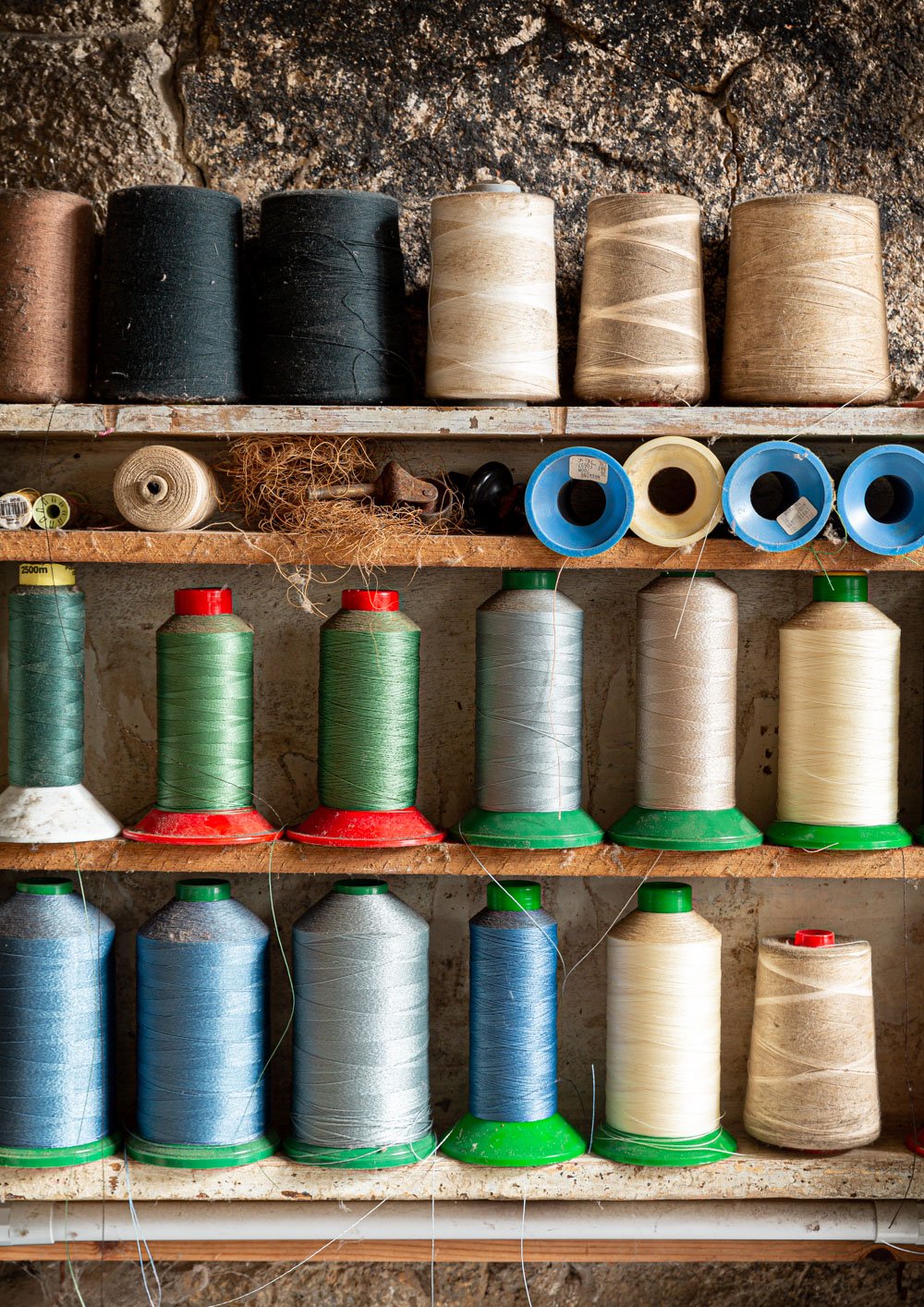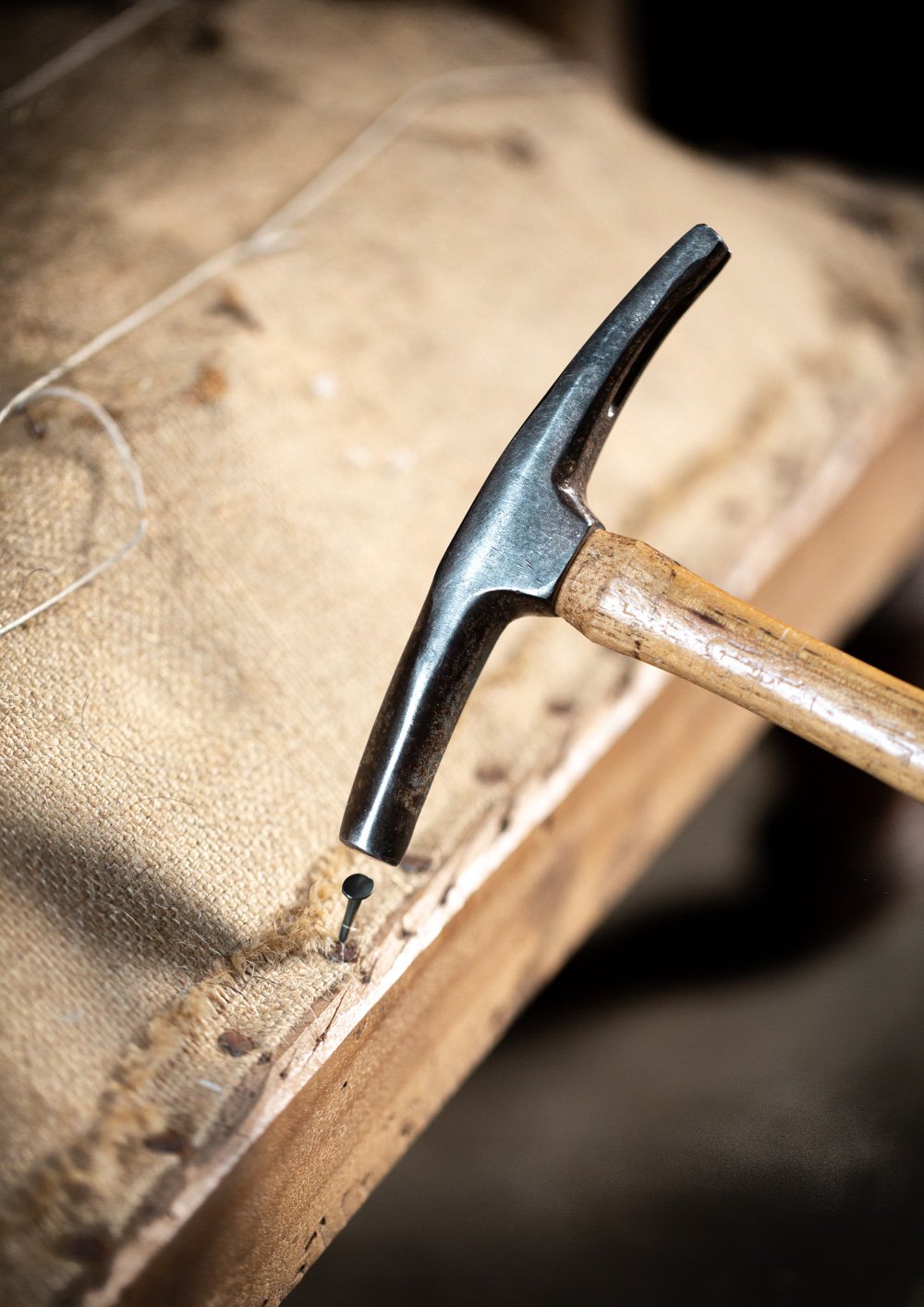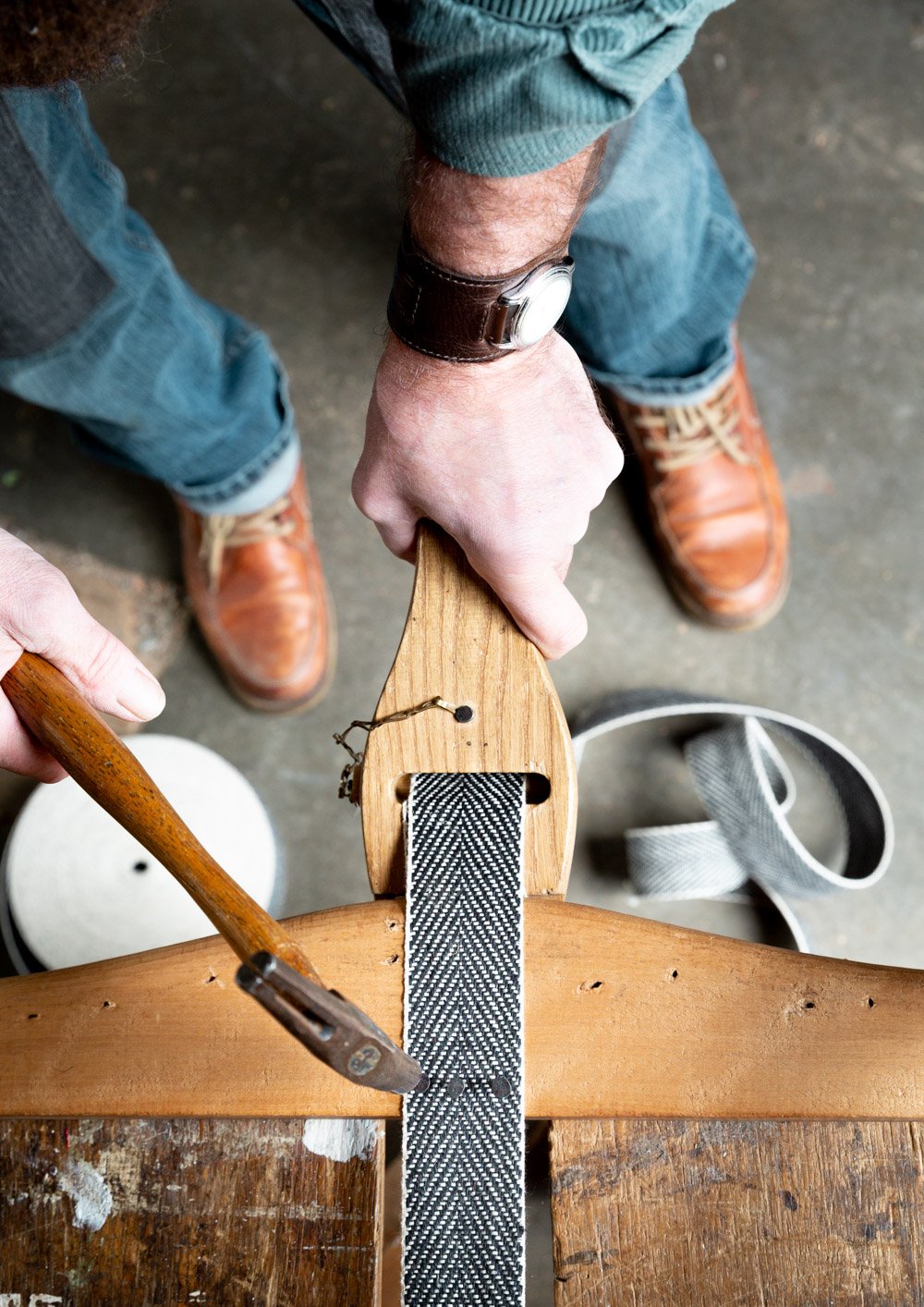THE SECRET LIFE OF CHAIRS
Upholster Stuart Coote shares the story of his craft and the strange think that lurk in the sofa. Published in Period Living.
Words and photos: Suzy Bennett
THE SECRET LIFE OF CHAIRS
Upholster Stuart Coote shares the story of his craft and the strange things that lurk under the sofa. Published in Period Living. Words and photos: Suzy Bennett
During his 30-year career as an upholsterer, Stuart Coote has found many strange things down the back of the sofa. Many items you might expect – coins, crochet hooks, cannabis, cutlery from TV dinners. But oddities include an 1899 front page article about the Boer War, a stash of war medals and a pair of saucy underwear, concealed, in Stuart’s words, ‘in a place it wouldn’t be found, presumably as a key turned unexpectedly in a lock’.
‘Taking apart people’s furniture gives a real insight into the way they live - and often what they eat for dinner,’ jokes Stuart. ‘It’s also a chance to walk with the ghosts of the past,’ he adds. In a tradition spanning centuries, upholsterers have signed their work and left secret messages to each other from beyond the grave. On one 1920s chair, a frustrated craftsman had scribed ‘Couldn’t get symmetry right here.’ Stuart’s cheeky riposte? ‘Don’t know what you mean. Had no trouble.’
Finding Stuart’s workshop, on the outskirts of the Dartmoor town of Chagford, is easy. Just tune your ear to the distant sound of his chamber music, follow it past pretty thatched cottages and the lichen-encrusted medieval church of St Michael’s, to a cobbled courtyard. Here, Bach merges with the boing of compression springs, the whirr of a sewing machine, or the creaking sound of webbing being stretched until it twangs with a perfect B-flat.
Stuart’s workshop is a lofty Georgian coaching stable with thick granite walls, double-height doors, original stone floors and owl windows. Occasionally, when he’s working late, a pipistrelle bat from the colony in the barn next door keeps him company, once even crawling across his worktop. The town’s artisan baker, potter and a felt-maker work in the surrounding stables.
Inside, as your eyes adjust to the shadows, a riot of colour, form and texture emerges. ‘It’s picturesque Dickensian disorder,’ Stuart tells me. There are bags stuffed with horsehair, shredded coconut husks and dried grass, used for padding. Rafters are strung with casters, clamps and rickety rattan chairs. Tools, tassels and twine line the walls, while shelves are lain with rolls of delicate silks, sumptuous damasks, slubby linens, soft wools and hard-wearing hessian. The scent of leather and freshly planed oak fills the air. Stuart’s lurcher, Eno, snoozes peacefully by the heater in a tattered mahogany armchair.
Stuart shows me some of his equipment: hyper-sensitive scales for weighing feathers; a lingerie ‘overlocker’ dating from the late 1950s, which he uses for sewing delicate fabrics; and a cast-iron pot for boiling animal glue. ‘I use it because it’s reversible and some customers like things to be truly authentic, but boiled hooves and horns are bilious things to work with,’ he says. Window sills are crammed with hand-labelled pots containing a vast array of potent-looking liquids: French polishes, oils, dyes and woodworm treatments. ‘I often say I’m only in this for the solvent abuse,’ he jokes. ‘I don’t mind ending the day feeling a bit floaty.’
Stuart’s interest in furniture grew at art college. He schooled himself the basics, then taught for five years, before opening his business, Grove Upholstery, in Peterborough, and subsequently Dartmoor.
Resoundingly old-school – Stuart has no website or social media feed and barely uses email, preferring his landline – his methods are similarly traditional. ‘I try to use the techniques of the period of the piece I’m working on,’ he says. This means different stitching, tension, seat firmness and materials. Georgian pieces demand wool and linen; in Victorian, it’s jute and cotton.
Stuart’s most memorable antique pieces include a 1640 walnut chair, two original 1770 Chippendale Cockpen armchairs and 18 painted Italian chairs from the early 1700s - four of which turned out to be fakes. ‘They were excellent copies and had me fooled until I got inside them,’ he says.
Quirky modern commissions have included chopper motorbike seats for a gang of Hells Angels, fitted furniture for an Airstream trailer and a chair covered entirely in scouring pads, ‘which was softer than you’d think’. He also makes furniture from scratch, such as headboards, footstools, sofas and copies of chairs. He even made his own mattress.
Stuart loves Georgian furniture for its ‘perfect proportions’, Victorian ‘for the curliness and pomp’ and the ‘very Scandi’ look of Arne Jacobsen. ‘I like fabric to be true to the period of the chair itself, but I also love very audacious modern fabric on antique furniture because it bucks the trend endless dusky rose velvet and damasks,’ he says.
Stuart is also a fan of today’s industrial fashion for leaving chairs artfully stripped back. ‘It flags up the very craft of upholstery and furniture making. People get to appreciate the secret life of chairs, 80% of which is usually hidden from view.’
For anyone thinking of sending a piece of furniture to be reupholstered, Stuart has a word of warning: ‘Beware of mid-century seating. It’s the most capacious and easiest to lose things down the back of. In this business, it’s finders keepers.’















